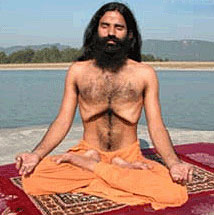Supta, in Sanskrit, means reclining. Baddha means bound and Kona is angle Asana means pose. Therefore Supta Baddha Konasana means Reclining Bound Angle Pose.

Practicing:
1.First be seated in Baddha Konasana Pose,this supta-baddha-konasana pose starts with baddha konasana only so be seated.
2.In order to find what props your body needs to hold the reclined version of the pose comfortably for some time lower your back and torso to the floor using your hands to support and guide you. Inhale and slide the arms up over your head and rest them on the floor extended above your head.
(If this is a comfortable pose then you do not need any props. However, if it is not comfortable then props will probably prove to be beneficial. There are a number of common causes of discomfort and some standard and highly effective prop-based remedies.)
3.One source of discomfort is your knees, inner thighs or groins when your leg muscles are not yet stretched to the point where the knees come all the way down to the floor.
4.Another common source of discomfort is the lower back.This prop should be long enough so that when you lie down on it it supports your entire upper torso including your head.

5.Relax in the pose and then, when you are finished, release the belt around your feet, extend the legs and roll out of the pose onto your side, and then return to a seated position.
 |
| Girl in position with all props supported |
The above image can give you an idea that how a girl supporting her knees and lower-back for the comfortability of her and also of the position.
 |
| Pregnant Women in position |
Benefits:
- Frees energy flow in pelvic area.
- Increases vitality in digestive organs.
- Good for pregnant women in preparation for childbirth (use bolsters).
- Quiets the mind.
- Relief from PMS and menopausal symptoms.
- Relief from mild depression.
- Stretches inner thighs and opens groins Can provide great relief for wheelchair bound patients.












































